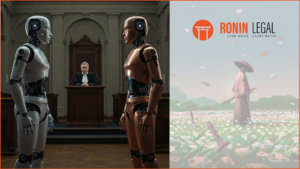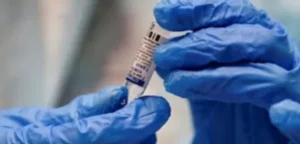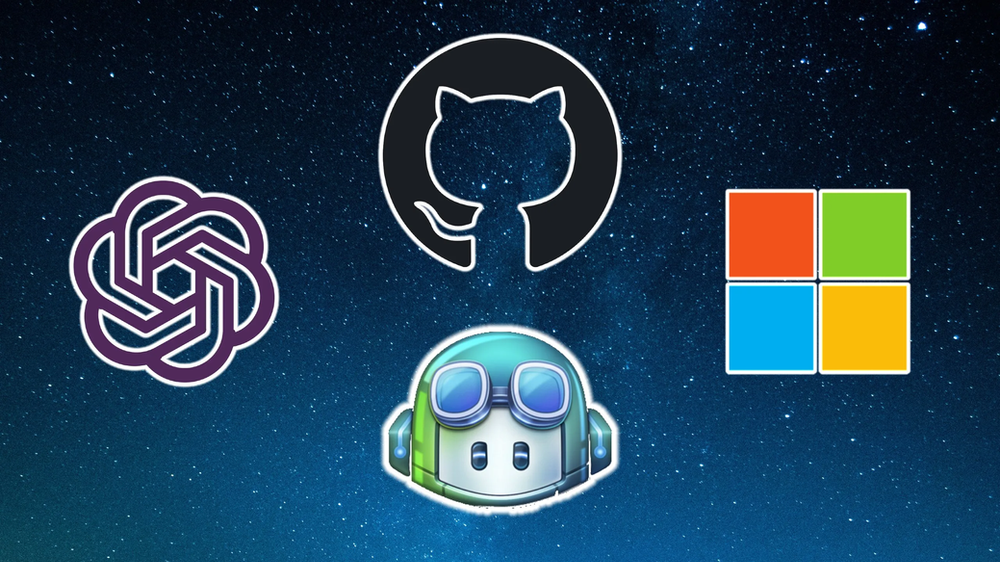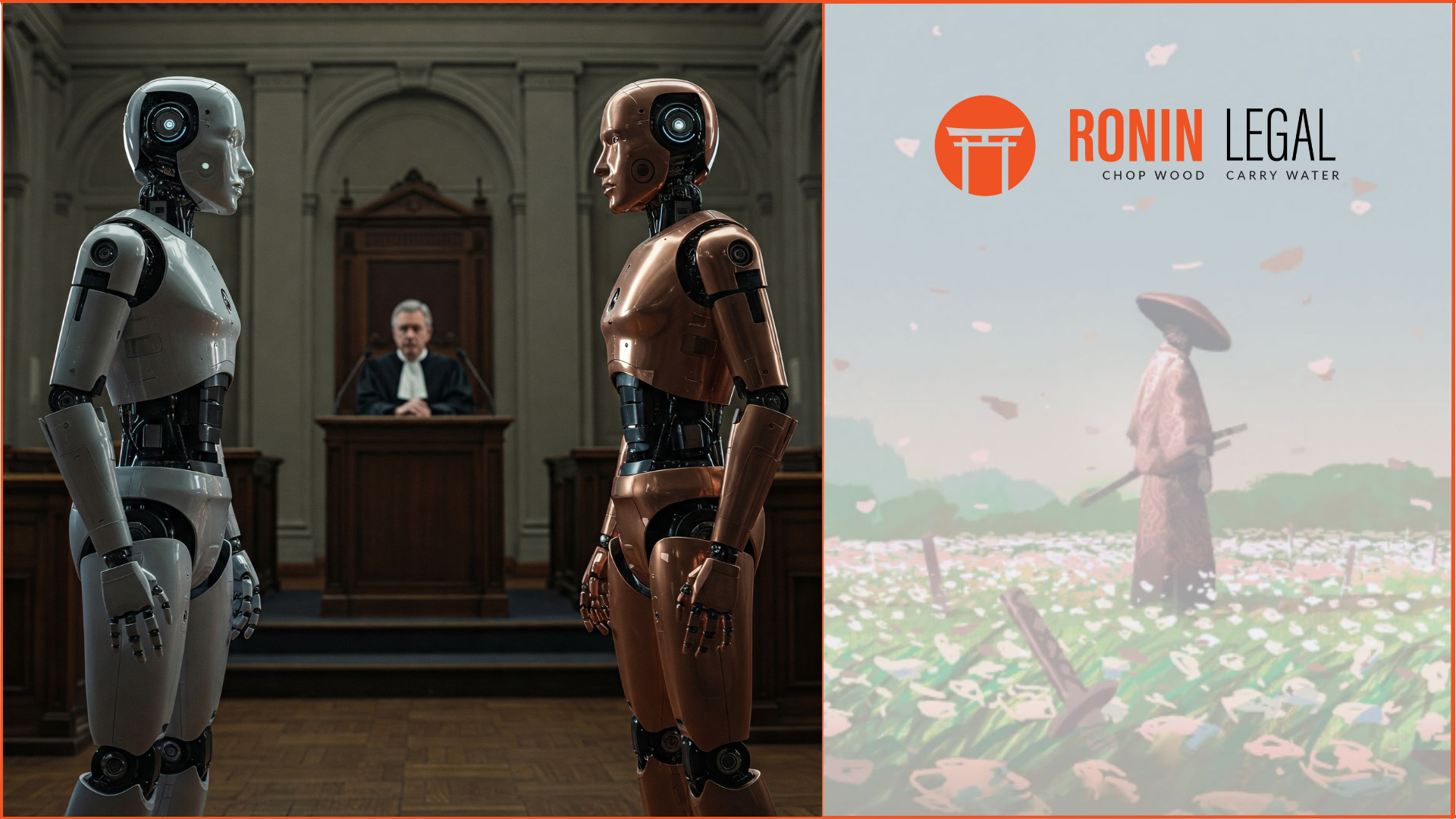By Shantanu Mukherjee and Anushka Iyer
RECAP
In Part 1 of our series on AI & Ownership, we examined how governments and courts across various jurisdictions approach ownership of AI-generated works. In doing so, we looked at the landmark judgment of Thaler v. Vidal where the US, UK, Europe, Australia, and Germany denied protection to a patent filed naming AI as an inventor. We also saw a similar approach in respect of copyright – where countries, either by way of judicial pronouncements or guidance require that copyright protection may only be granted to a ‘human’ author (barring exceptions to AI-assisted works).
In Part 2, we consider other legal issues arising at the intersection of ownership and AI, including text and data mining rules, fair use exceptions to copyright law, publicity rights, and competition law concerns.
GENERATIVE AI & PUBLICITY RIGHTS
Last month, a German magazine published an interview with Michael Schumacher, the seven-time F1 champion, who has not been seen in public since suffering a serious brain injury in 2013. At the end of the interview, the magazine revealed that the interview was generated using AI.[1] Schumacher’s family threatened to file a lawsuit against the magazine over the interview, following which the magazine fired its editor and apologized to Schumacher’s family.
An AI-generated comedy special featuring NFL Legend Tom Brady was taken down after a cease-and-desist letter was sent to the comedians involved in making and posting the video.[2]
An AI-generated song called “Heart on my Sleeve”, which featured the voices of musicians Drake and The Weeknd was abruptly taken down from streaming platforms after a copyright claim by Universal Music Group (UMG).[3]
While the technological achievements involved here are admirable, as lawyers we need to consider: what are the rights of an individual whose likeness or voice appears in such AI-generated deepfakes?
What are Publicity Rights?
Publicity rights refer to an individual’s right to exercise exclusive control over their name, face, image, likeness, voice, personality, or any other recognizable aspect of their persona. This includes the right to profit from the use of their identity.
Scope of publicity rights
The right of publicity largely remains unrecognized as a distinct right under law, and may be protected under common law, or as a part of other umbrella rights available under various statutes. These include the:
1. Tort of Publicity (also referred to as personality rights), which to a large extent is based on the test of identifiability i.e. the tort of publicity may only protect individuals that can be publicly recognized.[4] Courts have held that the tort of publicity is deeply rooted in the right to privacy.
2. Right to Privacy where the unauthorized appropriation of one’s image or likeness may qualify as the invasion of the right to privacy;[5]
3. Law of unfair competition where unauthorized use of an individual’s name or likeness that suggests such individual’s association with a product in a manner that is untrue or misleading. This is generally provided for under consumer and anti-trust laws;[6]
4. Trademark laws if an individual can establish his or her identity as a trademark, and where such identity is used to falsely advertise a product or designate its origin;[7]
5. Copyright Laws that recognize a performer’s right including an actor, singer, musician, dancer, or any other person who makes a performance, and moral rights that are inherent to copyright and cannot be transferred.[8]
Violation of publicity rights
Generally, a violation of publicity rights is said to occur when an individual’s name, person, image, likeness, or voice is misappropriated by another person for commercial interest or gain.
However, as discussed above, the development of jurisprudence surrounding publicity rights has been far from uniform and largely dependent on the decision of the courts. This has led to uncertainty in determining what constitutes as a violation of publicity rights. The answer to this question mostly depends on the unique facts of each case, and the development of AI has only added to the uncertainty.
Fair use as a defense
Although the comedians who posted the AI-generated video of Tom Brady complied with the cease-and-desist letter issued by his legal counsel, they stated that it was similar to the work done by impressionists who spend hours studying an individual to be able to mimic them. They argued that the AI-generated video was satirical in nature and achieved the same thing as a human impressionist.[9]
Accepting this argument would also require one to accept that there was no difference in the work generated by a human and an AI. However, this doesn’t seem to be the case. As we saw in Part 1 of AI & Ownership, the work generated by an AI is not granted the same protection as work generated by a human, due to, among other reasons, lack of originality.
We know that LLMs are trained on large amounts of data scraped from the internet – so it appears that the answer to whether work that is otherwise considered fair use (such as satire) would continue to amount to fair use when it is generated using AI, is intrinsically linked to the answer to whether work generated by an AI using scraped data can be considered fair use.
Text and Data Mining (TDM); and Competition Law Concerns
To enable any LLM to create work, it must first be trained to do so. This is done by feeding the LLM large amounts of data, consisting of existing work such as texts, images, artwork, etc. from various sources including the internet to enable it to identify patterns. This process involves making a copy of the data to feed the model. The issue that arises here is that a lot of data (even if generally available to view online) is protected by copyright and often requires a license.
TDM and Copyright Infringement
On 17 January 2023, Getty Images (an image licensing company) announced its intention to commence legal action in the UK alleging copyright infringement against Stability AI. Getty Images has now commenced legal action against Stability AI in the UK and U.S. The complaint filed by Getty before the District Court of Delaware states that Stability AI scraped close to 12 million stock images owned or represented by Getty to train their Stable Diffusion model without Getty’s consent, even though the terms of Getty’s website specifically prohibit the use of their images for commercial purposes without authorization. Getty also alleged that a number of images generated by Stable Diffusion were of low quality, and sometimes bizarre. These images also contained a modified version of Getty’s watermark which not only violated U.S. trademark laws but also misrepresented the relationship between Stability AI and Getty thereby violating unfair competition laws.[10]
Similarly, in the US, several artists have filed a class action lawsuit against Stability AI, Midjourney, and DeviantArt, alleging that these companies used artwork protected by copyright to train AI models without any compensation or permission from the creators. The lawsuit alleges direct copyright infringement, violation of the Digital Millennium Copyright Act (DMCA), vicarious copyright infringement related to forgeries, violation of class members’ right of publicity, and various violations of California’s unfair competition laws for use of the work created by the artists without their permission.[11]
In November 2022, a complaint was filed against GitHub, Microsoft, and OpenAI by software developers who alleged that the unauthorized use of public source code scraped from Github to create OpenAI’s Codex and Github’s Copilot violated copyright, contract, privacy, and business laws, among others. The software developers further alleged that Codex and Copilot sometimes reproduced their code without having obtained their permission and in violation of the terms under which they had licensed their work to GitHub. The Judge hearing the case dismissed the claims of the plaintiff for want of additional information and clarity on the injury caused to them.
TDM as Fair Use
In some cases, the extraction and use of such data may constitute fair use such as in the case of The Authors Guide v. Google, Inc., in which a US Court of Appeals held that Google’s copying of entire books for creating a searchable database that displayed excerpts of those books constituted fair use.
A number of countries have also amended their IP laws to allow TDM – with slightly varying thresholds.
The UK CDPA, currently, allows TDM for non-commercial research of copyright work, provided that access to such data is obtained in a lawful manner e.g. purchasing a license to access such data. The UK also recently sought to expand the scope of fair use of TDMs for any purpose – including research and commercial,[12] however, decided against the same after public consultation on the matter.
Japan allows TDM for data analytics – free from any restrictions for use in non-commercial purposes while Singapore prefers a slightly more restrictive approach by imposing a purpose limitation.[13] Countries in Europe are permitted to adopt an open exception for research[14] – e.g. Germany allows TDM for non-commercial use.
TDM exceptions around the world seem to have one thing in common – the prohibition or reluctance to allow the use of TDM for commercial purposes. But when an AI system has a commercial use case and is being trained on copyrighted material, can it be said to fall within the exception provided to TDM? Arguably not.
Additionally, since the statutory exceptions to TDM are not absolute, it may also be prohibited by the terms and services of websites (see Getty Images case).
Competition Law concerns
When LLM chatbots such as ChatGPT, summarize articles from websites that are protected using paywalls thereby allowing users to access the source article’s content without having to pay for it, the business model of the publishers may be threatened.[15]
German publishers are demanding royalties for the use of their content by chatbots to prevent violation of their ancillary copyright – an exclusive right allowing publishers to permit access to its content. Further, if search engines start favouring content generated using their own AI, it may violate the EU Digital Markets Act.
CONCLUSION
The explosive growth in AI-generated content, and the technology’s potential to generate virtually any form of art, including short films (such as the fictitious Star Wars trailer in the visual style of indie director Wes Anderson created using Midjourney), film scripts, photographs, and music, has caused much consternation among creators and rights owners. In particular, note that the demands of the Writers Guild of America, in connection with their ongoing strike, include that neither literary material (e.g., scripts, outlines, etc.) nor source material (e.g., an idea or a rough draft) should be generated by AI and that any writing credit in a movie can only be given to a human. AI’s ability to scrape and monetize publicly available data at scale from the internet has caused certain platforms to rethink how they engage with AI. Reddit, for example, announced that they would start charging companies (in this context, OpenAI) for downloading and accessing the data made available by Reddit. Having realized the importance of data, other companies have considered adopting a similar approach.
On October 25, 2022, Shutterstock announced its collaboration with Open AI’s DALL-E[16] and recently updated its terms to reflect the same.[17] Shutterstock will now not only allow its contributors to opt out of submitting their work for the training of DALL-E but also compensate those that do.
In a similar move, the singer Grimes declared that she would split royalties on any AI-generated song that used her voice.
The war over content has begun, and it is too soon to predict a winner: algorithm or human. Perhaps, wholesale legislative reform will ultimately protect creators’ legitimate interests, but one thing is certain: the genie is out of the bottle, and this is the end of human creativity as we know it, for creation now and hereafter will likely always involve some collaboration between man and machine. Art may never be the same again.
REFERENCES
[1]https://www.espn.in/f1/story/_/id/36235366/michael-schumacher-family-take-legal-action-fake-ai-interview.
[2]https://www.cbssports.com/nfl/news/tom-brady-threatens-to-sue-comedians-over-ai-generated-special-impersonating-him/.
[3]https://www.roninlegal.in/post/ai-ownership-ip-competition-law-and-publicity-rights-in-a-changing-world-part-1.
[4] Krouse v. Chrysler Canada Ltd. 1 OR (2D) 225 (1974); Athans v. Canadian
Adventure Camps Ltd., (1922) 17 OR 2d 425;
[5] See Restatement (Second) of Torts § 652C, comments a & b, illustrations 1 & 2; Articles 19 and 21 of the Constitution of India; Article 8 of the Convention for the Protection of Human Rights and Fundamental Freedoms (1950). Section 5 of the Quebec Charter.nAlso see, Les Editions Vice-Versa Inc. v. Pascale Claude Aubry, [1998] 1 SCR 591.nAlso see, Kateryna Moskalenko, The right of publicity in the USA, the EU, and Ukraine, https://www.sciencedirect.com/science/article/pii/S2351667415000104.
[6] See Section 2(28) of Indian Consumer Protection Act, 2019; Also see, https://www.law.cornell.edu/wex/unfair_competition.
[7] See Section 14 of the Trademarks Act 1999, Also see, 15 U.S.C. § 1127, Construction and definition of trademarks read with § 1125 of The Lanham Act.
[8] See Sections 28 and 57 of the Copyright Act 1957, and Campbell v.Acuff-Rose Music Inc., 510 U.S. 569, 578 (1994) which used the transformative test to determine moral rights and the scope of fair use.
[9]https://www.cbssports.com/nfl/news/tom-brady-threatens-to-sue-comedians-over-ai-generated-special-impersonating-him/.
[10]https://fingfx.thomsonreuters.com/gfx/legaldocs/byvrlkmwnve/GETTY%20IMAGES%20AI%20LAWSUIT%20complaint.pdf.
[11]https://indiaai.gov.in/news/artists-team-up-in-the-class-action-lawsuit-against-stability-ai-deviantart-and-midjourney.
[12]https://www.gov.uk/government/consultations/artificial-intelligence-and-ip-copyright-and-patents.
[13]https://infojustice.org/archives/44946.
[14] Directive 2001/29/EC of the European Parliament and of the Council of 22 May 2001 on the harmonisation of certain aspects of copyright and related rights in the information society.
[15]https://www.roninlegal.in/post/artificial-intelligence-in-healthcare-part-2.
[16]https://www.theverge.com/2022/10/25/23422359/shutterstock-ai-generated-art-openai-dall-e-partnership-contributors-fund-reimbursement.
[17]https://support.submit.shutterstock.com/s/article/Shutterstock-ai-and-Computer-Vision-Contributor-FAQ?language=en_US.















